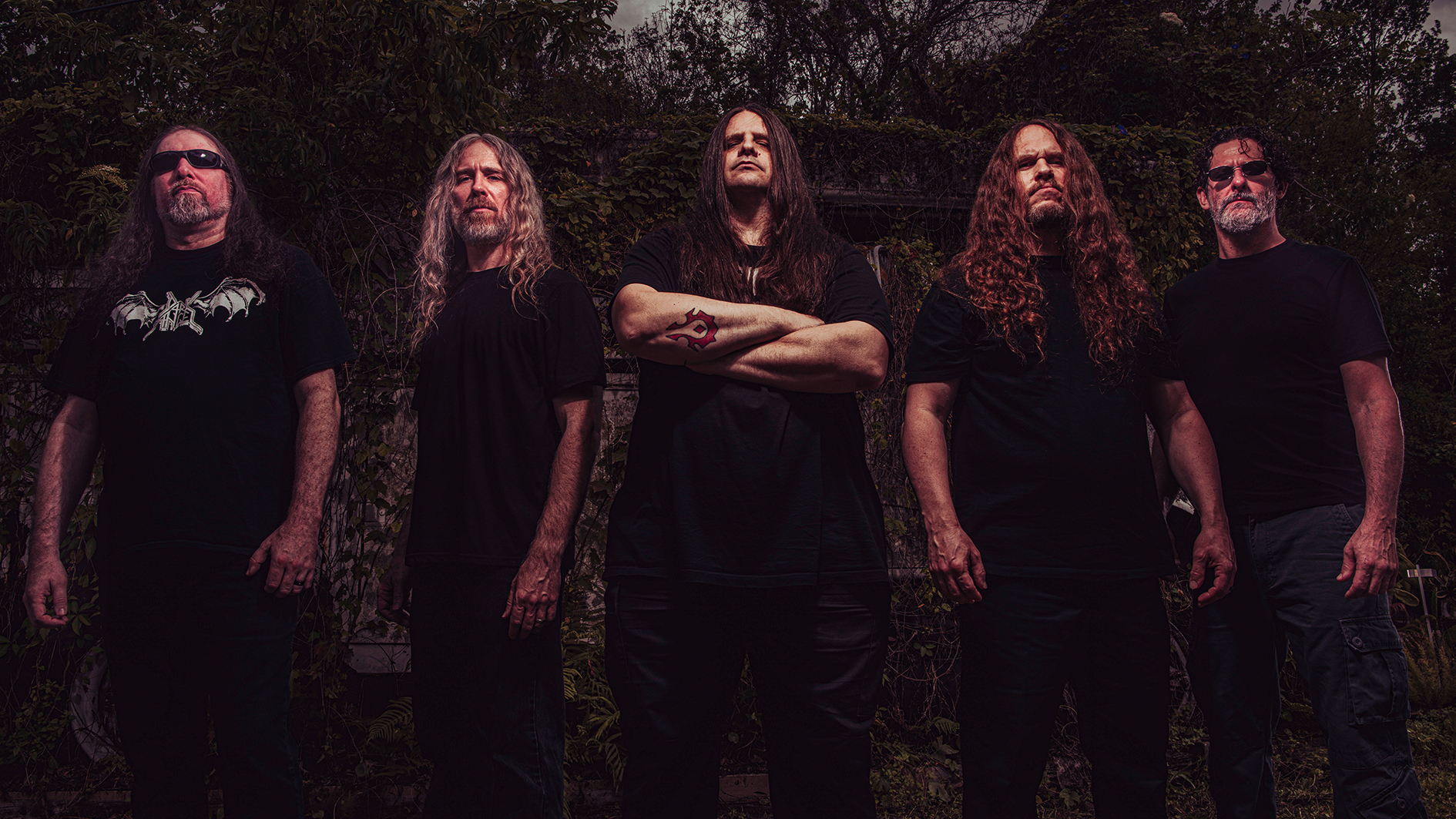Erik Rutan on joining death-metal titans Cannibal Corpse: “It’s still kinda surreal... I never foresaw this happening!“
The newly instated guitarist talks axes, amps, his "savior" pedal and the creation of the band's punishing new album, Violence Unimagined

Few bands have been able to typify death metal to the same degree as Cannibal Corpse, whose inexhaustible supply of bloodthirsty riffs and gore-driven lyrics have made them undisputed masters of the extreme.
Violence Unimagined – their 15th studio album, which drops this year – sees longtime producer and Hate Eternal leader Erik Rutan joining as a full-time member, replacing Pat O’Brien. Here he explains the core fundamentals of the Cannibal Corpse sound and how he approached fitting into their inimitable wall of noise...
You’ve filled in on guitar for live shows in the past. What was it like to join the group officially?
“It’s still kinda surreal... I never foresaw this happening! When I left Morbid Angel in 2003, my focus was Hate Eternal and producing. I’ve done so much since then, but never thought I’d join another band.
“But Cannibal Corpse isn’t just any other band. They’re a huge part of my life. I’ve produced their last five albums, that’s a third of their catalogue by this point, and I’ve toured with them for decades – with Hate Eternal and even Morbid Angel back in 1994, over in Europe. They gave me a copy of their debut album before it even came out... that’s how far we go back.”
So what kind of gear did you end up using?
“I would say Mesa has dictated Cannibal’s sound for a long time, whether it’s a Dual Rec or Triple Rec. We’re always combining amps – I like to do that for different dynamics and textures.
All the latest guitar news, interviews, lessons, reviews, deals and more, direct to your inbox!
“In the past, it’s been a Dual Rec and a Triple, or a Triple with a Mark V. For Kill, it was a Triple Rec and an Engl. But usually it’s one amp that really defines the tone – after spending a bunch of days trying different heads and cabinets owned by Rob [Barrett, co-guitarist] and I, there was one Dual Rec that we liked most.
“We always quad track, so it would be left and right with the Dual, and then another amp for tracks three and four, which ended up being an original 5150 and a Maxon ST-9 Pro+.”
And why did you choose the Maxon over any other 808 circuit-style pedal?
We’re always combining amps – I like to do that for different dynamics and textures
“Both Rob and I love our Tube Screamers. The ST9 Pro+ can be used for so many different textures. I call it the ‘savior’ pedal because I’ve done some tours with fly-ins, like in Malaysia once when they had a Marshall with really old tubes. There wasn’t much gain and it sounded really thin.
“The first pedal I always pick up is the savior! You can dial in anything you want. We also used a Maxon OD9 through a JCM800 for the solos. And then for guitars, we used some of Rob’s Deans and my red BC Rich Ironbird, that thing’s like my baby.
“Rob also had this '80s Charvel, it played really well so I ended up using it. There was a Les Paul in there too. We actually wanted an Explorer for some things, but because of the low tunings the shorter scale wasn’t liking it much!”

A lot of your solos over the years have had a harmonic minor quality to them...
“I’m not a very theorized guitarist. I’ve always played by ear and I think that’s what makes my style unorthodox. I know what I’m doing but I’m not the most knowledgeable on the technicalities. People have told me I’m doing the Hungarian Minor over this chord and I’m always like, ‘Oh, cool!’
“That’s usually how I find out what the fuck I’m doing. But there are no rules in music. I’ve worked with people who were really theoretical and people who totally weren’t. I’ve learned some things over the years but it’s also very important to not limit yourself.
“Some of my harmonizations and counterpoints might even be technically wrong… but to me, if it sounds right, it is. Think about all the artists who did things in a way that was very unorthodox. How many people told Frank Zappa he was wrong… he just gave them the middle finger!”
Violence Unimagined is out on April 16, and available to preorder now via Metal Blade Records.
Amit has been writing for titles like Total Guitar, MusicRadar and Guitar World for over a decade and counts Richie Kotzen, Guthrie Govan and Jeff Beck among his primary influences as a guitar player. He's worked for magazines like Kerrang!, Metal Hammer, Classic Rock, Prog, Record Collector, Planet Rock, Rhythm and Bass Player, as well as newspapers like Metro and The Independent, interviewing everyone from Ozzy Osbourne and Lemmy to Slash and Jimmy Page, and once even traded solos with a member of Slayer on a track released internationally. As a session guitarist, he's played alongside members of Judas Priest and Uriah Heep in London ensemble Metalworks, as well as handled lead guitars for legends like Glen Matlock (Sex Pistols, The Faces) and Stu Hamm (Steve Vai, Joe Satriani, G3).

